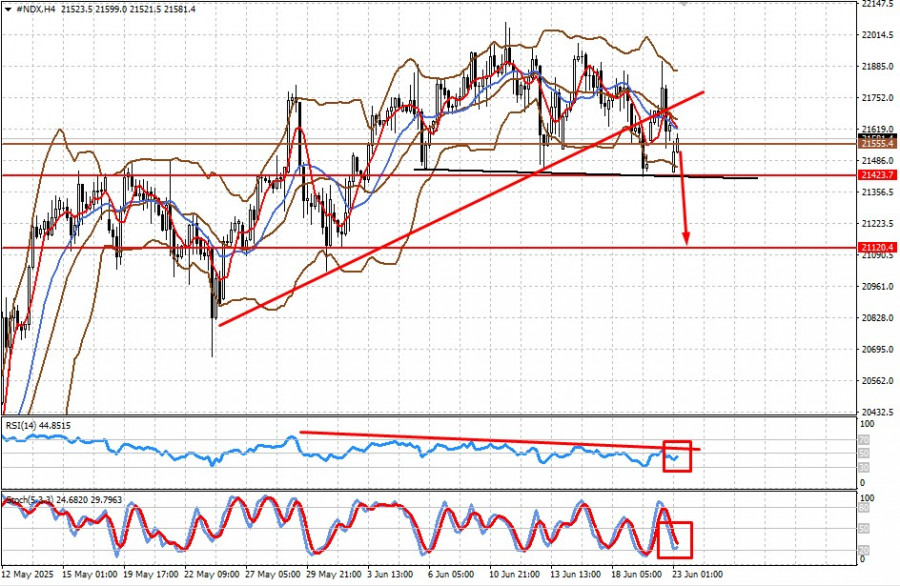

The United States could not abandon its satellite and Middle Eastern proxy—Israel—to face Iran alone. On Sunday, it struck Iran's nuclear facilities, though these strikes failed to achieve their objectives. Markets responded relatively calmly to the news, as might have been expected.
With its actual entry into the war on Tel Aviv's side, Washington has finally shed its peacemaker facade in this conflict. Realistically, nothing else could have been expected, given the circumstances. The first and most notable market reaction came from crude oil prices, which opened the trading session with a gap, gaining around 2%. Although some of these gains were later retraced at the time of writing, the overall escalation of the crisis continues to support prices. A new surge in oil prices would likely follow Iran's potential decision—if made—to block the Strait of Hormuz, cutting off 30% of global crude oil supply. In that scenario, prices would almost certainly spike to $100 per barrel or higher, marking another escalation point in regional tensions.
Other markets have so far reacted rather weakly to the Middle East crisis escalation. This is mainly due to Iran's claim that the bombings caused no significant damage, as nuclear material had already been moved to alternative storage locations early in the conflict. The U.S. dollar, traded against a basket of major currencies, is hovering around the $99.00 mark—receiving neither strong support nor facing major pressure.
The cryptocurrency market is currently stagnant, lacking significant drivers for any major upward or downward movement.
Asian stock indexes and futures for European and American equities are mostly declining, though not catastrophically. This mild reaction is also due to the ineffectiveness of the U.S. bombings, which missed their intended targets.
A key indicator of risk aversion—gold—is trading lower in the spot and futures markets. This supports the view that the American president's military action against Iranian nuclear sites failed to deliver meaningful outcomes.
Investors should pay close attention to upcoming U.S. economic data. The most important will be the report on the Personal Consumption Expenditures (PCE) Price Index and its core measure, as well as income and spending figures—all closely monitored by the Federal Reserve and investors as indicators of whether rate cuts may resume.
In addition, the U.S. Q1 GDP data will be in the spotlight. Analysts expect continued negative momentum in macroeconomic indicators, potentially signaling that the U.S. economy is entering a recession.
Fed Chair Jerome Powell's scheduled speeches will also be significant, as markets will be looking for insights into the state of the U.S. economy and future monetary policy direction.
Market participants will likely stay focused on developments in the Middle East. Any further deterioration in the situation—a real risk—could drive up demand for oil and petroleum products. Other markets would likely react negatively to such developments, with the exception of gold, which may regain demand as a traditional safe-haven asset.

The CFD contract on the S&P 500 futures is trading with a slight decline amid rising tensions in the Middle East. A worsening situation could reduce demand for most equities—except for energy and oil companies, which alone will not be enough to support the broader index. The SPX may drop below the support level of 5944.00, with potential declines to 5915.65 and possibly to 5858.35. A sell level may be considered at 5940.75.
The CFD contract on NASDAQ 100 futures also trades slightly lower amid the Middle East escalation. Increased tension could weaken demand for technology stocks, pushing the contract to 21,324.70, then 21,120.40. A sell level may be considered at 21,555.40.

QUICK LINKS